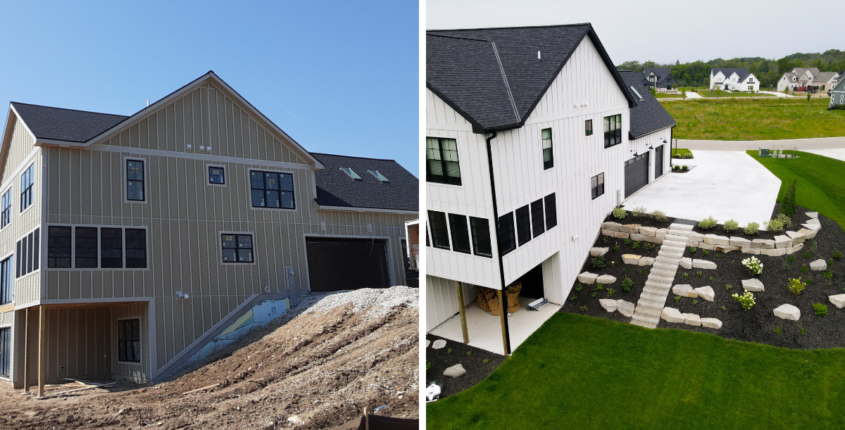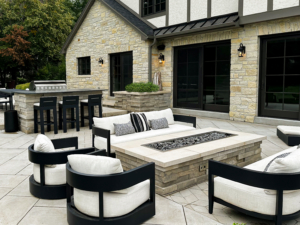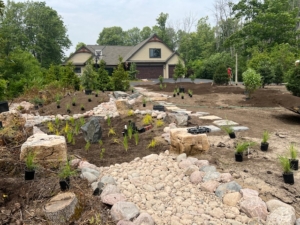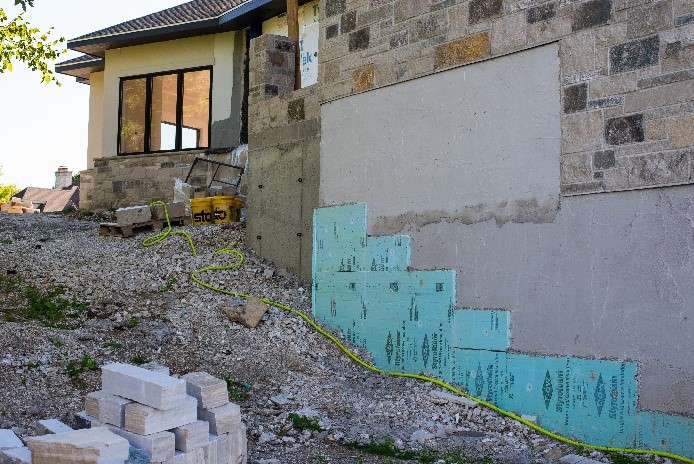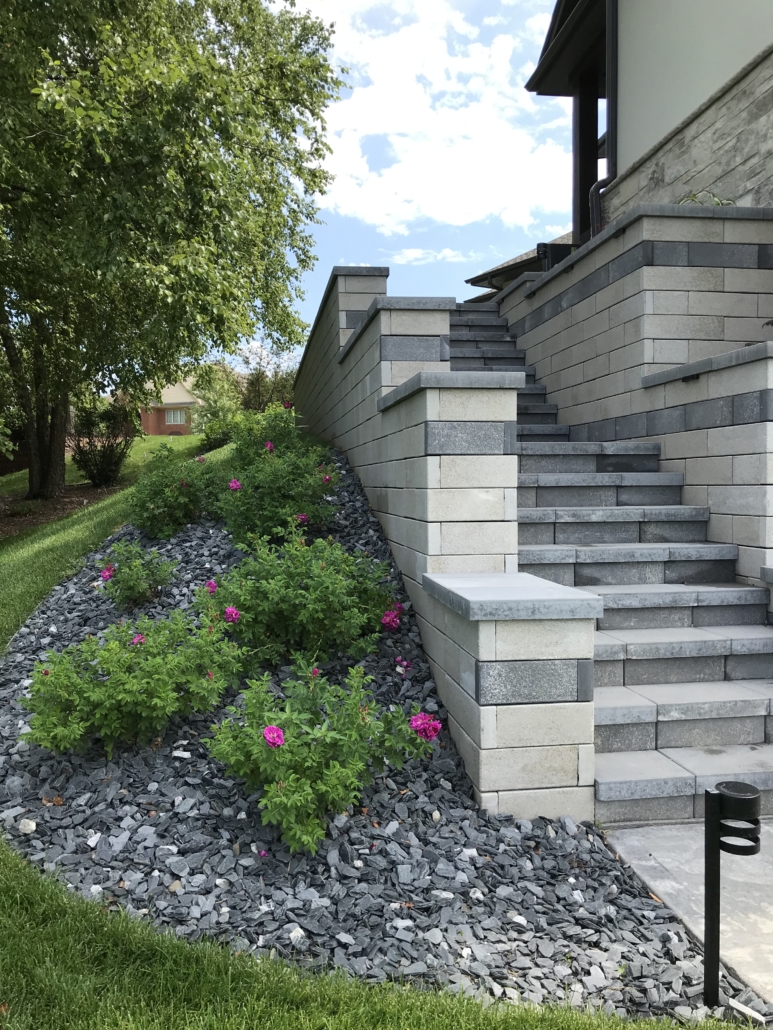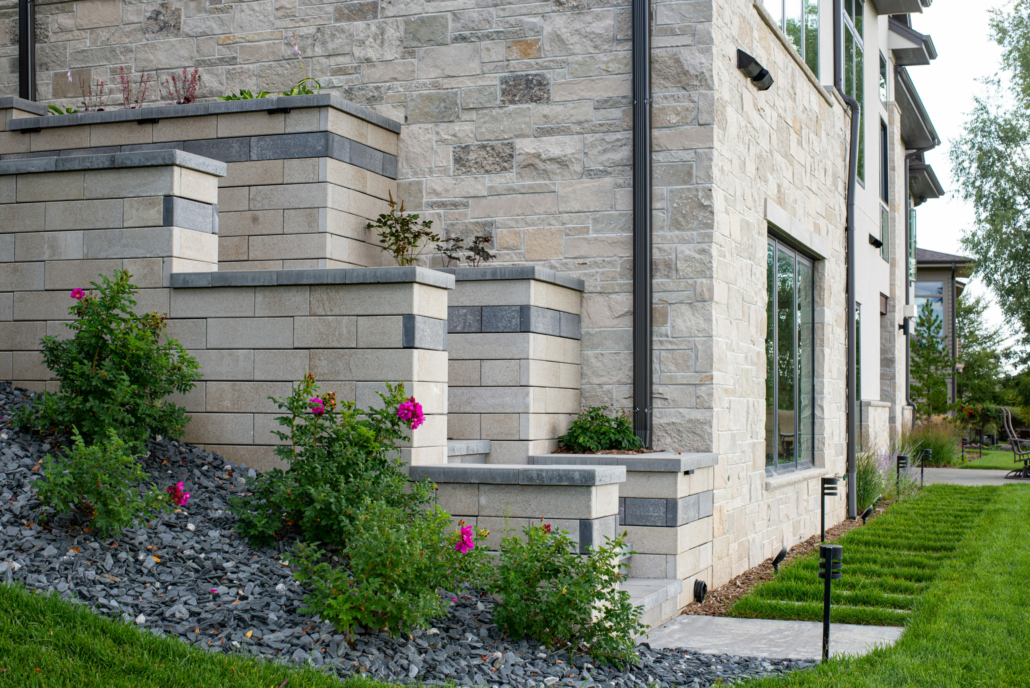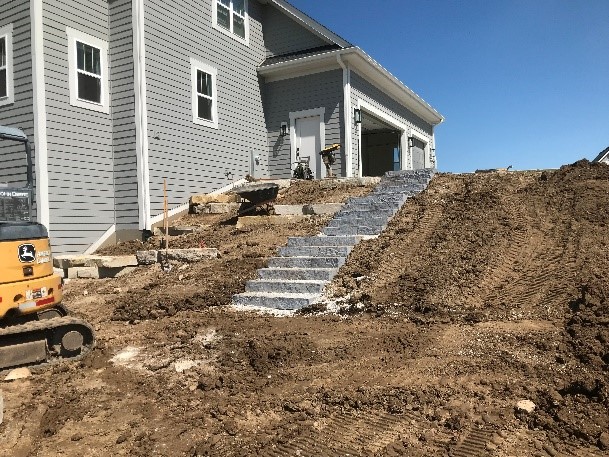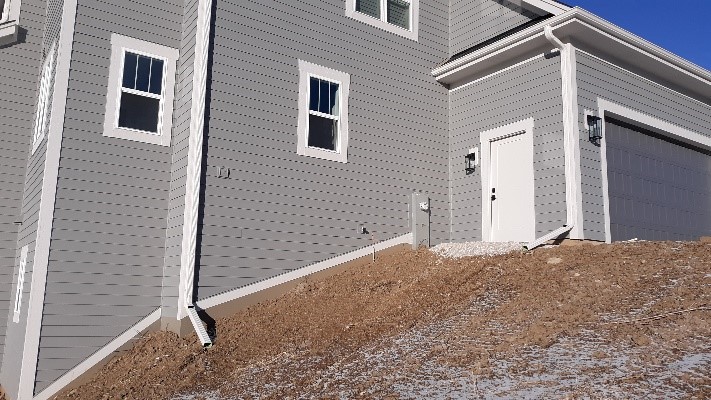New Home Construction Landscaping Considerations
When purchasing or building a new home, landscaping is often an afterthought—until it suddenly needs to be done. Based on our experience, there are several key factors new construction homeowners should consider before building or buying a home.
1. Budgeting for Landscaping
Builders focus on selling and constructing homes, not landscaping. It’s common for new homeowners to be told they can install their entire landscape—lawn, plantings, and maybe even a concrete patio—for under $10,000. Online sources also provide misleading estimates, with one popular site listing landscaping costs between $1,249 and $6,821. These figures can cause sticker shock when homeowners consult a professional landscaper and discover the actual costs.
A good rule of thumb is to budget approximately 10% of your home’s cost for essential landscaping. Factors that can increase this amount include:
- The size of your yard
- HOA requirements
- Retaining walls
- Upgrades like paver patios, lighting, firepits, or outdoor kitchens
2. Tree and Arborist Considerations
Builders will remove trees directly in the way of construction, but what about those surrounding your home? Consider whether any trees are unhealthy or pose a risk to your house. Tree removal or pruning is an additional cost that many homeowners don’t anticipate.
3. Grading and Soil Issues
In some cases, the grading left by the builder isn’t ideal, and the landscaper has to correct it. This may involve:
- Replacing removed topsoil
- Adjusting grading near the house to ensure proper drainage
- Bringing in additional fill or topsoil
4. Downspouts and Drainage
Builders are not landscapers, and their placement of downspouts can sometimes create major drainage issues. We recently encountered a situation where a downspout emptied into a small, enclosed planting bed with no proper drainage route. By the time the homeowner realized the problem, the sidewalks were already installed, leaving no easy fix.
Had we been involved during construction, we could have trenched and buried the downspout, directing water to a proper drainage area. Coordinating with a landscaper early can help prevent these costly mistakes.
5. Exposed Basement Challenges
The current trend in home building is to include an exposed basement, often on a hillside. While this design provides a great view and additional living space, it also creates a significant drop in grade from the main level to the finished basement. On paper, this may not seem like a major issue, but in reality, the resulting slope is often steep.
In many cases, these slopes become difficult—or even unsafe—to mow and are prone to erosion during heavy rains. To address this, a landscaper will likely recommend retaining walls or natural outcropping to create a safe, manageable space. While solutions vary depending on the property, these structural additions can become a substantial, unexpected expense.
In the next set of pictures, we were brought onto the project after the home was completed. The builder had sided all the way down to the slopeline on the side of the house. During the original consultation, we recommended a retaining wall based on our assessment of the building plan, but the homeowner did not think it was necessary at the time.
As experienced landscapers, we can quickly identify potential problem areas, but for a first-time homebuyer, these issues may not be as obvious—especially when reviewing plans on paper. Unfortunately, after the driveway was installed, the homeowner realized the slope was too steep to mow. Since we were not involved earlier in the process, building walls and creating level terraces would have required filling over the siding, which was not an option.
To address the issue, we installed natural outcropping to help stabilize the slope. Spreading plants were added to prevent erosion, and steps were built to provide safe access to the backyard. While this was not originally part of the homeowner’s budget, it became a necessary addition. Over time, the plantings will help cover the exposed foundation beneath the siding, as soil cannot be placed against it.
6. HOA and Municipal Requirements
Homeowners’ associations (HOAs) often have strict landscaping regulations that can significantly impact costs. Some examples we’ve encountered include:
- Requirements for large, mature trees (e.g., 4” caliper trees that can cost over $1,000 each)
- Mandatory sod installation instead of seeding
- Restrictions on materials, such as allowing only natural stone for hardscapes
Additionally, municipal regulations may require permits or impose zoning restrictions, especially in areas near wetlands or shoreland zones.
How to Avoid Landscaping Surprises
- Assess Your Lot
Look closely at your property before committing. Is it sloped? Are there trees that need removal? Will all areas be safely mowable? - Work with a Professional Landscaper Early
Only a qualified landscaper can give you a realistic estimate of landscaping costs. Finding someone you trust and involving them early in the process will help with budgeting and may even save money in the long run. - Facilitate Communication Between Your Builder and Landscaper
Introducing your builder to your landscaper allows for better coordination, preventing costly fixes later. This collaboration ensures:
- Proper drainage planning
- Pre-installed PVC conduits for future lighting or irrigation
- Well-planned grading to avoid future erosion issues
- Understand HOA and Municipal Regulations
Review your HOA’s landscaping requirements and discuss them with your landscaper early. Also, check for municipal restrictions, permits, and easements that could impact your plans.
Why Choose American Landscape?
Navigating these landscaping challenges can be overwhelming, but American Landscape is here to help. Our design/build team guides you through every stage of the process, preventing costly surprises and ensuring a seamless, beautiful landscape for your new home.

